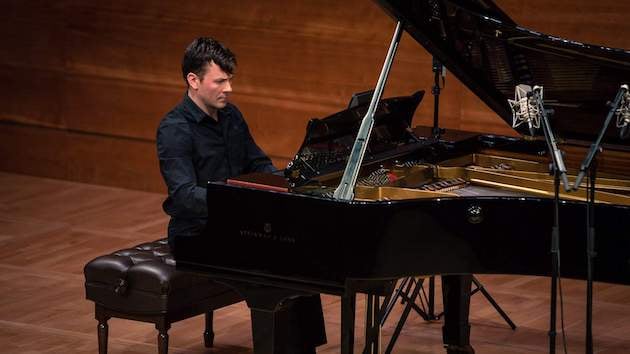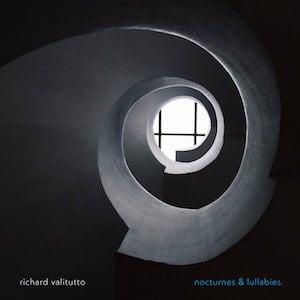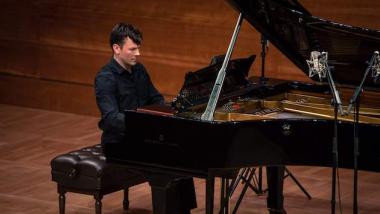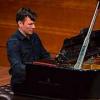
Pianist Richard Valitutto is a fixture in the thriving (prepandemic) Los Angeles new-music scene, spotted most frequently with the ensemble Wild Up as well as in Monday Evening Concerts, the LA Phil’s Green Umbrella series, and whoever else needs a fearless keyboard explorer. Now, following the recently-established habit of giving umbrella titles to classical albums of various pieces — as they have been doing in pop music since the invention of the record album — Valitutto groups eight solo piano pieces spanning three decades on a CD titled nocturnes & lullabies (New Focus).
 At first pass, I listened to this CD casually without referring to the titles or liner notes — and it seemed to me like one giant, continuous, contemplative, sparely upholstered suite in which it was often hard to tell where one piece ended and the next began. Digging into it more actively later, the differences between the pieces and the overall structure of Valitutto’s concept became clearer, but a good deal of my initial impression still held true.
At first pass, I listened to this CD casually without referring to the titles or liner notes — and it seemed to me like one giant, continuous, contemplative, sparely upholstered suite in which it was often hard to tell where one piece ended and the next began. Digging into it more actively later, the differences between the pieces and the overall structure of Valitutto’s concept became clearer, but a good deal of my initial impression still held true.
The album is divided into three sections in which pairs of longer pieces roughly 12-to-15 minutes in length form a sandwich around four short pieces ranging from under four minutes to seven minutes. The disc begins and ends with two works by Nicholas Deyoe, the artistic director of L.A.’s wasteLAnd concert series. The other composers are Rebecca Saunders, Philip Cashian, Marc Sabat, Maura Capuzzo, Wolfgang von Schweinitz, and Linda Catlin Smith.
With gloomy, doom-laden chords and the whacking of a prepared piano key, Deyoe’s NCTRN proceeds in a fog that Saunders’s shadow extends by using the sostenuto (middle) pedal on the piano to produce halo-like aftereffects from a series of banging clusters. Gradually, the collection seems to grow more and more close to tonal centers as it goes, from Cashian’s post-Debussy questioning to Sagat’s minimalism and Capuzzo’s strumming of the piano strings that conjure a ghostly Tristan chord.
When Deyoe returns in Lullaby 2, so does the gloom. Yet after he shatters the mood violently about two-thirds of the way through, he ends the piece — and the CD — by quoting the slow second movement of Schubert’s B-flat Sonata, D. 960. This of course does not sound like the rest of the recording, and it has the perhaps unintended effect of erasing the other pieces from the memory as Valitutto poignantly offers Schubert’s benedictory lullaby. Such are the risks you take with found material.




